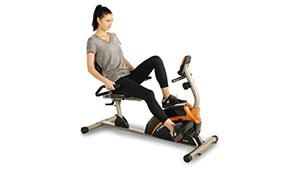
Just like your brake pads, bar tape, chain and tires, your cycling cleats need to be replaced every so often. While we'd love to give you an exact timeframe like "every six months," it's not an exact science—things like your style of riding and mileage influence when your cleats need to be replaced.
The key is to replace your cleats before they have a structural failure or you're unable to remove them due to an issue with the hardware. The former can result in potential injury or leave you stranded miles from home, and the latter can be a serious headache and might damage your cycling shoes.
We know there are several different road cycling pedal brands on the market, but here we're addressing the three most popular—Shimano, Speedplay and Look. From wear indicators to a sloppy cleat-pedal connection, here are some super simple ways you can tell if you need to replace your cycling cleats.
Shimano
Since we're talking about road bike pedals, we're omitting Shimano's two-bolt SPD-style system that's popular among mountain bikers. The SPD-SL style is a three-bolt system embraced by road cyclists of all levels.
The SPD-SL cleat is essentially shaped like a triangle, and there's a rubber pad on each "corner" that's a different color from the hard plastic cleat body. When any of these three pads are worn through to the point where you can see the plastic, it's time to replace them. The back two pads have a bit more "life," and they have a wear indicator marker that Shimano advises not to pass.
The plastic base on the cleat that's in contact with the pedal will start to wear as well, and this impacts how well the cleat snaps into (and stays in) place. As with any Shimano, Look or Speedplay pedal, if it's hard to clip out or you're clipping out without trying to, that's a sign your cleats need to be replaced.
Speedplay
Speedplay cleats last significantly longer than Look or Shimano cleats, but they're also significantly more expensive. Monitor the wear on the metal brackets and springs that secure the cleat to the pedal, and if it's excessively shiny or flattened out, consider replacing.
Speedplay recommends replacing your cleats every 3,000 to 5,000 miles, but as mentioned, it depends on your riding style, conditions and how much you walk around in them.
Look
The new Look Kéo cleats are no longer just hard plastic—like the Shimano cleats, they include rubber pads on the front and back to both increase traction while walking around and limit the wear on the cleat platform.
Most importantly, Kéo cleats have two wear indicators at the front and two at the back that will become visible as the material is worn through. It's also important to monitor the material that's in contact with the pedal itself. If you notice excessive wear, or the pedal feels sloppy when clipped in, replace.
Increase the Lifespan of Your Cycling Cleats
You'll inevitably have to replace your cycling cleats at some point, but there are a few ways to slow the wear so you don't have to replace them as often.
First, check your cleats for any debris after each ride, and remove any embedded rocks or dirt. Second, occasionally check and make sure the three bolts that secure the cleat to the sole of the shoe are snug. And lastly, limit the amount of contact your cleat has with the ground.
How?
Next time you're off your bike and walking to the café, make sure you're using cleat covers (for Look or Shimano cleats) or cleat plugs (for Speedplay cleats) to protect your cleats from the pavement. Simply throw a pair in your jersey pocket before you head out the door—this will dramatically increase the lifespan of your cleats, and as a bonus, it makes walking in your cycling shoes much less slippery.
READ THIS NEXT: How to Tell When You Need to Replace Your Brake Pads








Discuss This Article